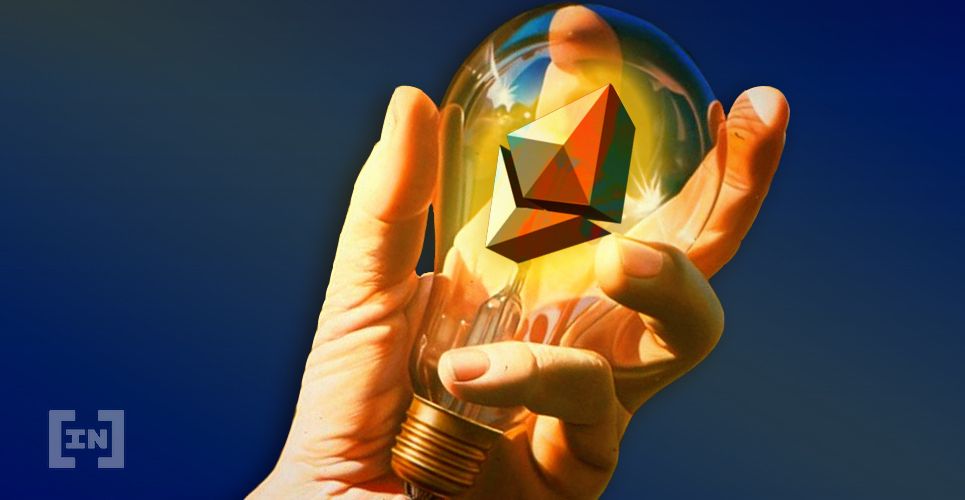2022-9-20 23:00 |
Blockchains are usually referred to as either a Layer-1 or Layer-2 solution. Layer-1s are the base layer of an ecosystem such as Ethereum, Cardano, or Solana. Layer-2 solutions are anchored to Layer-1 blockchains and provide scalability.
Layer-3s can also exist; however, you cannot stack another layer on top of Layer 2 to add even more scalability, Ethereum founder Vitalik Buterin wrote in a blog post on Sept. 17.
There are several challenges with stacking two similarly designed layers on top of each other, Buterin wrote. For instance, limits to data availability and reliance on Layer-1 bandwidth for emergency withdrawals can hinder the stacking of two layers.
Buterin said that rollups on top of rollups could not provide higher scalability than Layer-2 solutions. Rollups compress the amount of data a transaction needs to store on the Layer-1 blockchain to ensure the transaction can be accessed and verified.
In the case of a simple token transfer, the data is reduced from 100 to 16 bytes. For ZK-SNARK transactions that preserve privacy, transaction data is compressed from 600 bytes to 80 bytes, Buterin said.
But data can only be compressed once, Buterin wrote. If further compression is possible, the logic of the second compressor can be integrated into the first so that the data can be compressed just once with the same results. This is why rollups on top of rollups cannot “provide large gains in scalability,” he wrote.
Three visions of L3 use-casesStarkWare, which operates StarkNet, a ZK-rollup that serves as a Layer-2 Ethereum scaling solution, laid out three different visions of how Layer-3s could be used. Buterin considers all three visions as “fundamentally reasonable.”
In the first scenario, Layer-3s can be used for customized functions such as privacy. The aim would not be to provide additional scalability in such a case. The Layer-2 would provide scalability to applications, and a Layer-3 would serve the customized functionality needed for different use cases.
In the second vision, the Layer-2 offers general-purpose scaling, and the Layer-3 provides customized scaling through specialized applications. The Layer-3 would compute data through means other than the EVM or rollups, whose data compression is optimized according to specific data formats.
In the third vision, Layer-3s can provide weakly-trusted scaling through Validiums, which use SNARKs to verify computation. Data availability, here, is the responsibility of a trusted third party. Buterin said that although Validiums offer a lower security grade than rollups, they are “highly underrated” and “vastly cheaper.”
Layer-3s can fix confirmation time vs fixed cost tradeoffs of rollupsWhile rollup transactions are cheap, rollups have to pay a high fixed cost every time they submit a batch of transactions to a Layer-1. For optimistic rollups that run on top of Layer-1s, the fixed cost can be as high as 21,000-Layer-1-gas per batch, while for ZK rollups, the cost can go up to 400,000-gas per batch, according to Buterin.
If rollups wait longer to submit more transactions in one batch to lower the cost, it increases batch intervals. This means that users have to wait a very long to get a confirmation of their transactions.
For a ZK rollup with a processing power of 5tps to submit a batch of transactions in every Ethereum block (every 12 seconds), gas per transaction would reach 10,368. However, if the batch interval increased to 1 minute, the gas per transaction reduces to 2,368.
In the case of a ZK rollup inside a ZK rollup, the gas per transaction comes down to 501 with batch intervals of 12 seconds. Hence, Layer-3s can fix the time and cost tradeoff for rollups.
What is and isn’t a layer?According to Buterin, stacking the same scaling solutions on top of each other does not “work well,” which is why the rollup on top of rollup model does not make sense. However, he argues that a three-layer structure where the second and third layers are assigned different purposes and functions can work.
However, there is an unsolved semantic debate over what can be considered as a layer and what cannot, Buterin said. He provided his own definition of what properties constitute a Layer-2:
“Their purpose is to increase scalability They follow the “blockchain within a blockchain” pattern: they have their own mechanism for processing transactions and their own internal state They inherit the full security of the Ethereum chain”By B uterin’s definition, optimistic and ZK rollups are Layer-2s, but validiums, proof aggregations schemes, on-chain privacy systems, and Solidity fall outside the definition. While some of them can be referred to as Layer-3, not all of them should be, he wrote.
Buterin added that “it seems premature to settle definitions while the architecture of the multi-rollup ecosystem is far from set in stone” and most of the Layer-3 discussions are still theoretical.
But as the Layer-2 scaling ecosystem matures, Buterin expects more sophisticated and simpler Layer-3 constructions to play a larger role.
The post Vitalik Buterns reveals Layer-3s to have “bigger role” as Layer-2 scaling ecosystem matures appeared first on CryptoSlate.
origin »INS Ecosystem (INS) на Currencies.ru
|
|

















